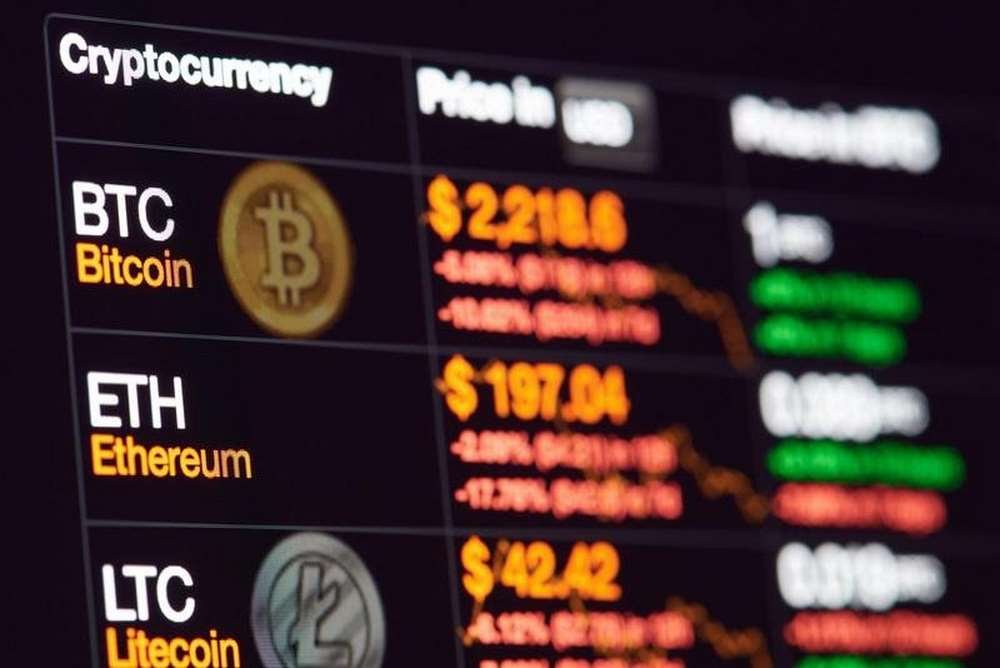
Bitcoin's value methodology continues to be a black box. It undoubtedly has value, now you ask , what's this value? What drives it? Could it be undervalued or overvalued?
Although bitcoin occasionally experiences what some might call 'price stability', it's clear the price of bitcoin and other cryptocurrencies fluctuate. Comparing against any other asset class and any reasonable time period shows a price volatility that sticks out.
Pundits like to wax lyrical by what drives crypto prices. Examples abound of all sorts of chart wizardry and novel fundamentals analysis involving new-fangled metrics around network stats and mining economics. To some extent, these techniques to establish value can be useful. But remembering how even a broken clock is right twice daily, I'm sceptical that these valuation methods have proven to be consistently correct, even if sometimes they seem to be.
Any asset that's susceptible to multiple 100's of percentage points gains, accompanied by a 50-95% retracement in a couple of months, is clearly still undergoing price discovery. And I'm not only referring to the 2022-2022 bubble – it has happened many times:
| Cycle Start | Base | Peak | Max. Gain | Pull Back |
| Jun 2011 | $0.95 | $32 | 3,370% | 94% |
| Jan 2012 | $2 | $7 | 250% | 49% |
| Apr 2013 | $13 | $260 | 1,900% | 83% |
| Nov 2013 | $200 | $1,242 | 521% | 88% |
| Nov 2022 | $750 | $19,777 | 2,537% | ??? |
It's clear that these kinds of price movements are the fractal vacillations of the brand-new asset class with the powder-keg combination of high technological potential and little compatibility with existing mature valuation methodologies. Consequently, price action is dominated by the only real applicable model: human fear and greed.
What else do we expect? There surely cannot be consensus on value when there isn't even consensus on exactly what bitcoin is, or any other cryptocurrency for instance. Of course, fear and greed become the default when little else fits this paradigm. The term 'crypto-currency' is really a misnomer that 10 years after bitcoin's launch is proven to constrain the financial press into assessing it as being simply an alternate / inferior currency. But who says bitcoin is competing with currencies? There are already several schools of thought regarding how to regard bitcoin as an asset class, with no consensus as to which one is most suitable. Think about these several common narratives:
- bitcoin is really a currency. Its value comes from comparing its market cap from the M1 money way to obtain other fiat currencies / countries.
- bitcoin is really a payment network. Its value arises from comparing its transaction volume against other payment networks like Visa.
- bitcoin is digital gold. Its value comes from sharing the convenient monetary properties of gold without the inconvenient ones .
- bitcoin is really a capital-intensive utility. Its value arises from the economic price of securing the network through Proof-of-Work mining.
- bitcoin is a protocol. Its value comes from to be the missing bit of the decentralised internet; introducing digital scarcity in a world of digital abundance.
So, that is it? Some, any none of the above? There doesn't yet seem to exist an appropriate model for most analysts or investors to benchmark bitcoin or other proof-of-work crypto-assets against existing asset classes. It is simply not compatible with their frameworks, and for that reason we have seen hesitation for most big funds to allocate their portfolios to this new asset class, as crypto largely remains excluded from modern portfolio theory.
But that could be going to change.
THE Need for YIELD
Yield, the income that an asset produces, is typically considered separately towards the price increase which is yet another method of creating a return. In stocks and equities, the yield is available in the type of a regular dividend paid to shareholders. In tangible estate, the yield may be the rent you are able to charge. The yield is the interest you could make on your cash deposits, or the coupon on your bonds.
The income you could get on a financial asset is an important part of creating its value. It's the assets income, as well as the probability/risk of receiving this income, that underpins most investment decisions of today's markets. Essentially, it is the one common anchor that can help asset managers benchmark different assets against each other and set up a preference for how much of each they want to own. Even cash suits this framework, and investors that like to 'not-invest' by preferring cash over other higher-yielding investments are earning just as much of an active investment decision because the most ruthless Wall Street wolves.
Investors often use the income generated by a good thing to determine its price:
Without entering the technicalities such as compound interest, this provides an example. As you can see, yield allows investors to higher know how they'll be paid for taking on various amounts of risk, and thereby benchmark different assets against one another. This is price discovery for action.
MINING REWARDS ARE NOT YIELD
Proof-of-Work blockchains for example bitcoin are fascinating simply because they align self-serving interests with shared interests. The mining community, by taking part in the race to obtain the block solutions and enrich themselves with new bitcoin and costs, also secure the network and provide consensus and authority within the “true” history of transactions.
But even though this is a kind of income for miners, this is not the same task as yield. In the case of yield, investment returns should flow towards the holder from the asset, whereas mining rewards are essentially a return on the capital equipment accustomed to supply the mining work. As a result, mining rewards are 'earned' exclusively by the owners of specialised facilities with millions of dollars worth of equipment. Gold investors know the distinction between buying bullion and buying shares in gold miners, and while those mining shares might pay a dividend yield, it is not a yield being earned around the gold itself.
Gold, like bitcoin, doesn’t earn a yield either . This is probably why gold is often lumped and various other industrial 'commodities', despite the fact that industrial commodities, like iron or grain, have completely different valuation propositions: generally as inputs to value-adding processes. Gold however, for six,000 years, has been differently thought to be a safe-haven, or store of value, or hedge against inflation. Gold is a financial asset and have “real” intrinsic value like industrial commodities, but is categorised in the same way. Why? Since it can't be easily benchmarked against typical, yield-producing, financial assets for example bonds or equities. This, I believe, is the same problem suffered by bitcoin along with other Proof-of-Work cryptocurrencies. In addition, given they don't enjoy the 6,000 year good reputation for gold valuation, it's also why price discovery in crypto continues to be fraught with volatility, as bulls battle bears in a relentless, algo-pumped, social-media amped, primal Battle Royale between greed and fear.
STAKING IS YIELD FOR CRYPTO
People, obviously, still invest in bitcoin and all of another Proof-of-Work coins without yield because of their expectation of price increases and capital gains, much like art work, vintage cars, and unoccupied properties. However the kinds of investors who search for yield have largely had no palatable investment options in the crypto sphere.
That is, so far.
While Nakamoto-consensus and also the Proof-of-Work paradigm is responsible for starting off the cryptocurrency industry, there are more alternative mechanisms for securing and looking after blockchain integrity, such as Proof-of-Stake.
Unlike Proof-of-Work chains, for example bitcoin, where mining rewards are exclusively the purview of specialised facilities, with Proof-of-Stake chains, rewards become obtainable to anyone who holds the coins. In such a scheme, the average Joe need only offer up his coins as a sort of collateral, plus they can participate in the verification process required to add new blocks towards the chain. In this manner, they can receive new tokens like a 'reward to be honest', and achieve this while remaining in full having their; they don't have to lend them elsewhere. In turn they can earn compounding interest.
We have our yield!
In this model, income flows towards the holder from the asset and not to the owner of expensive mining equipment. So, we have a type of crypto asset investment that is suitable for the existing mindset and methods of typical investors in financial assets. One caveat is that the yield itself is denominated in crypto, not fiat, which could be either an unwanted supply of volatility, or an advantage when the yield you were earning seemed to be susceptible to capital gains without prejudice, asif share dividends were paid inside a fixed amount of shares not cash.
While Proof-of-Stake isn't a new concept, the very first generation Proof-of-Stake blockchains encountered flaws that were unexpected and difficult to remedy retroactively . It is just recently that projects are emerging which are deploying the Proof-of-Stake concept successfully, for example Tezos , Cardano , and Decred.. Even Ethereum, the second largest Proof-of-Work blockchain, has paved the way to soon transition to Proof-of-Stake after recently completing it's 'Constantinople' network upgrade.
CONCLUSIONS
Staking rewards are a problem. For many investors, whether retail or institutional, they'll be the very first taste of yield within the crypto domain. As people begin to understand and experience investment yield in crypto, this can spark a new wave of interest in Proof of Stake blockchains. The primary beneficiaries would be the new generation of Proof-of-Stake projects making it feasible for non-technical users to stake or delegate their. For many of those projects the staking rewards are only a by-product of their consensus design, using the main mission being a whole new blockchain ecosystem enabling new kinds of smart contracts and capabilities. Nevertheless, having a design built around Proof-of-Stake, these new blockchains also incentivise holders from the token to hold onto their coins , incentivise nodes to participate in consensus , and reduce the need for Proof-of-Work mining, which is more energy-intensive.
The big prize, however, is to bring cryptocurrencies one step closer towards being accepted as a serious investment asset class. By going beyond capital speculation, bringing consistent, predictable yields without any counterparty risk, investors and institutions will finally have the ability to start wrapping their heads around how to price crypto properly. That means more methodical valuation, better risk models, disciplined investment and a higher readiness by big funds to deploy capital into crypto as part of established diversification strategies. I would expect price discovery to strengthen and volatility to decrease, even though many investors will still expect capital gains along with yield. Crypto capital markets will start to take form.


